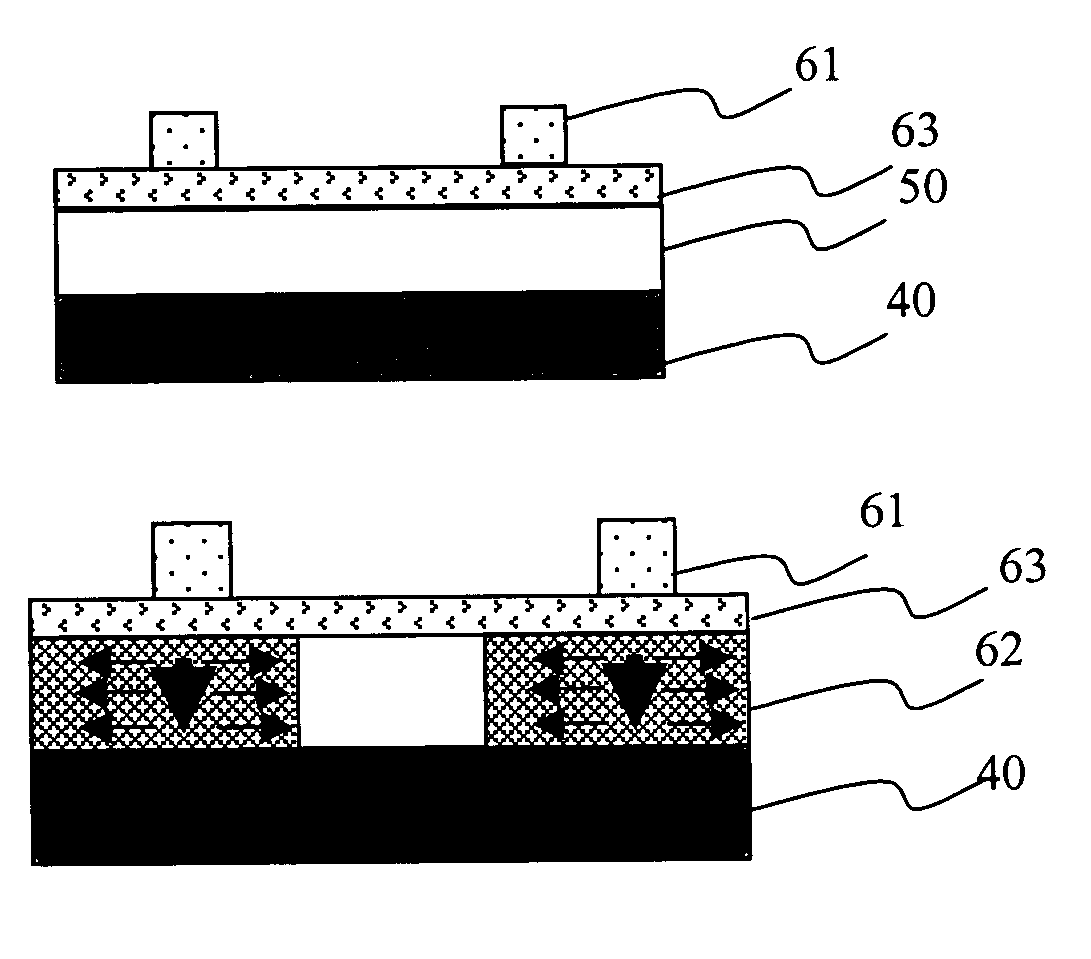Heating plate crystallization method
a technology of crystallization method and heating plate, which is applied in the direction of semiconductor devices, electrical devices, transistors, etc., to achieve the effect of rapid thermal annealing process
- Summary
- Abstract
- Description
- Claims
- Application Information
AI Technical Summary
Benefits of technology
Problems solved by technology
Method used
Image
Examples
Embodiment Construction
[0015]The present intention provides a heating plate crystallization method to be applied in a crystallization for a poly-silicon thin-film transistor. The heating plate crystallization method comprises the steps of forming a amorphous layer on a substrate, and depositing a heating plate layer on the amorphous layer. A heating plate area is presented on the heating plate layer by using a lithography etching process. Please refer to FIGS. 2A to 2E. They show the flowchart of a heating plate crystallization method according to a preferred embodiment of the present invention. Please refer to FIG. 2A. In the first step of the heating plate crystallization method according to the present invention, a amorphous layer 50 is formed on a glass substrate 40. Next, please refer to FIG. 2B, in the second step, by using a physical vapor depositing method (PVD), the metal, such as MoW, Cr, and so on, which can absorb the infrared rays and has a high thermal stability, is deposited on the amorphou...
PUM
| Property | Measurement | Unit |
|---|---|---|
| temperature | aaaaa | aaaaa |
| deformation temperature | aaaaa | aaaaa |
| deformation temperature | aaaaa | aaaaa |
Abstract
Description
Claims
Application Information
 Login to View More
Login to View More - R&D
- Intellectual Property
- Life Sciences
- Materials
- Tech Scout
- Unparalleled Data Quality
- Higher Quality Content
- 60% Fewer Hallucinations
Browse by: Latest US Patents, China's latest patents, Technical Efficacy Thesaurus, Application Domain, Technology Topic, Popular Technical Reports.
© 2025 PatSnap. All rights reserved.Legal|Privacy policy|Modern Slavery Act Transparency Statement|Sitemap|About US| Contact US: help@patsnap.com



